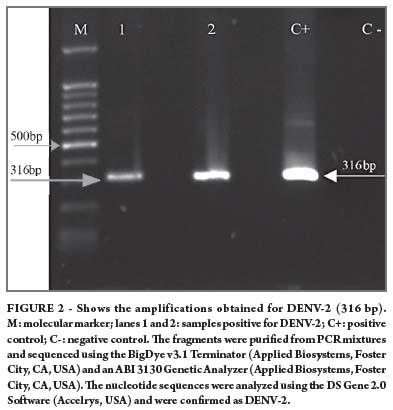INTRODUCTION: The Amazon region has extensive forested areas and natural ecosystems, providing favorable conditions for the existence of innumerous arboviruses. Over 200 arboviruses have been isolated in Brazil and about 40 are associated with human disease. Four out of 40 are considered to be of public health importance in Brazil: Dengue viruses (1-4), Oropouche, Mayaro and Yellow Fever. Along with these viruses, about 98% of the malaria cases are restricted to the Legal Amazon region. METHODS: This study aimed to investigate the presence of arboviruses in 111 clinical serum samples from patients living in Novo Repartimento (Pará), Plácido de Castro (Acre), Porto Velho (Rondônia) and Oiapoque (Amapá). The viral RNA was extracted and RT-PCR was performed followed by a Multiplex-Nested-PCR, using Flavivirus, Alphavirus and Orthobunyavirus generic and species-specific primers. RESULTS: Dengue virus serotype 2 was detected in two patients living in Novo Repartimento (Pará) that also presented active Plasmodium vivax infection. CONCLUSIONS: Despite scant data, this situation is likely to occur more frequently than detected in the Amazon region. Finally, it is important to remember that both diseases have similar clinical findings, thus the diagnosis could be made concomitantly for dengue and malaria in patients living or returning from areas where both diseases are endemic or during dengue outbreaks.
Arboviruses; Coinfection; Flaviviruses; Dengue; Malaria; Amazon region


